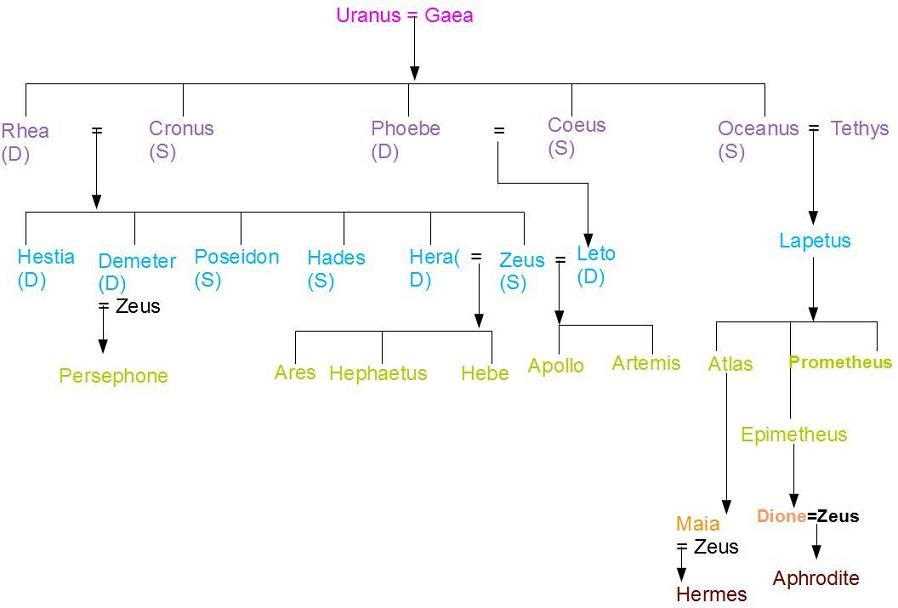

Olympia apparently also had an early tradition of twelve gods. The altar became the central point from which distances from Athens were measured and a place of supplication and refuge. According to Thucydides, an altar of the twelve gods was established in the agora of Athens by the archon Pisistratus (son of Hippias and the grandson of the tyrant Pisistratus), around 522 BC. The earliest evidence of Greek religious practice involving twelve gods ( Greek: δωδεκάθεον, dōdekátheon, from δώδεκα dōdeka, "twelve", and θεοί theoi, "gods") comes no earlier than the late sixth century BC. Twelve gods īesides the twelve Olympians, there were many other various cultic groupings of twelve gods throughout ancient Greece.

Some others who might be considered Olympians include the Horae, the Graces, the Muses, Eileithyia, Iris, Dione, and Ganymede. According to Hesiod, the children of Styx- Zelus (Envy), Nike (Victory), Kratos (Strength), and Bia (Force)-"have no house apart from Zeus, nor any dwelling nor path except that wherein God leads them, but they dwell always with Zeus". In the Iliad, the goddess Themis, who is listed among the twelve Titans, dwells on Olympus alongside the other gods, making her a Titan and an Olympian at the same time.

According to Diodorus Siculus, some said that Heracles was offered a place among the twelve, but refused as it would mean one of the original twelve being "cast out". Heracles became a resident of Olympus after his apotheosis and married another Olympian resident Hebe. The canonical number of Olympian gods was twelve, but besides the (thirteen) principal Olympians listed above, there were many other residents of Olympus, who thus might be considered to be Olympians. Olympic gods can be contrasted to chthonic gods including Hades and his wife Persephone, by mode of sacrifice, the latter receiving sacrifices in a bothros ( βόθρος, "pit") or megaron ( μέγαρον, "sunken chamber") rather than at an altar. Although Hades was a major deity in the Greek pantheon and was the brother of Zeus and the other first generation of Olympians, his realm was far away from Olympus in the underworld, and thus he was not usually considered to be one of the Olympians. They were a family of gods, the most important consisting of the first generation of Olympians, offspring of the Titans Cronus and Rhea: Zeus, Poseidon, Hera, Demeter and Hestia, along with the principal offspring of Zeus: Aphrodite, Athena, Artemis, Apollo, Ares, Hephaestus, Hermes and Dionysus. They gained their supremacy in a ten-year-long war of gods, in which Zeus led his siblings to victory over the previous generation of ruling immortal beings, the Titans, children of the primordial deities Uranus and Gaia. The Olympians were a race of deities, primarily consisting of a third and fourth generation of immortal beings, worshipped as the principal gods of the Greek pantheon and so named because of their residency atop Mount Olympus. They were called Olympians because, according to tradition, they resided on Mount Olympus.īesides the twelve Olympians, there were many other cultic groupings of twelve gods. In ancient Greek religion and mythology, the twelve Olympians are the major deities of the Greek pantheon, commonly considered to be Zeus, Poseidon, Hera, Demeter, Aphrodite, Athena, Artemis, Apollo, Ares, Hephaestus, Hermes, and either Hestia or Dionysus. Fragment of a Hellenistic relief (1st century BC–1st century AD) depicting the twelve Olympians carrying their attributes in procession from left to right: Hestia (scepter), Hermes (winged cap and staff), Aphrodite (veiled), Ares (helmet and spear), Demeter (scepter and wheat sheaf), Hephaestus (staff), Hera (scepter), Poseidon (trident), Athena (owl and helmet), Zeus (thunderbolt and staff), Artemis (bow and quiver) and Apollo (lyre) from the Walters Art Museum.


 0 kommentar(er)
0 kommentar(er)
